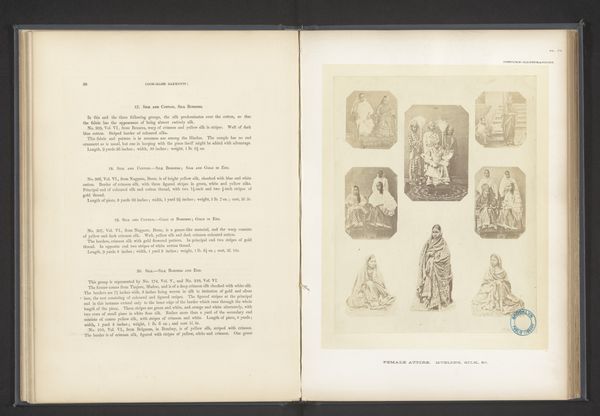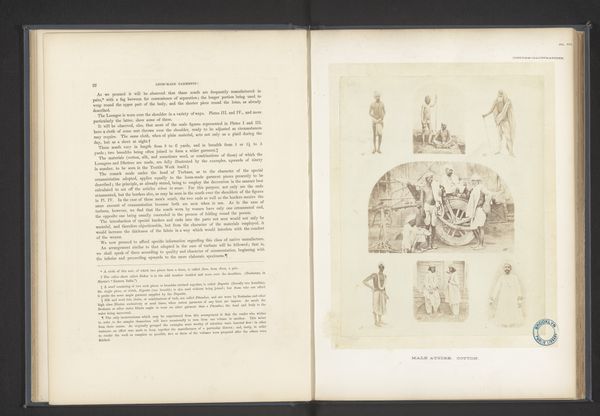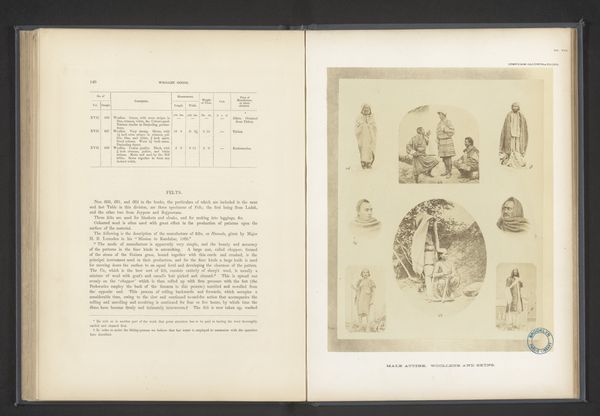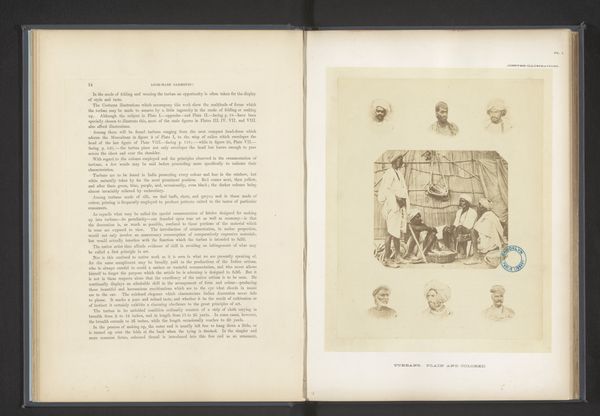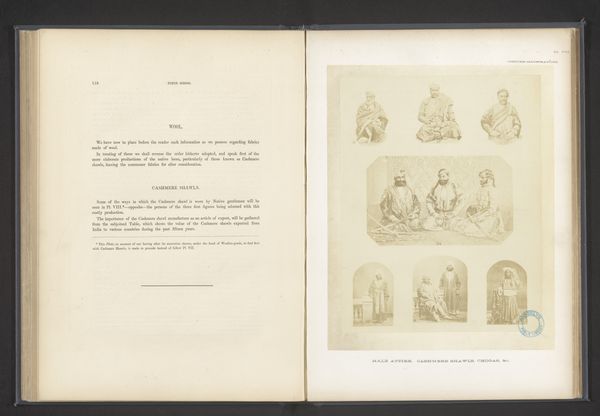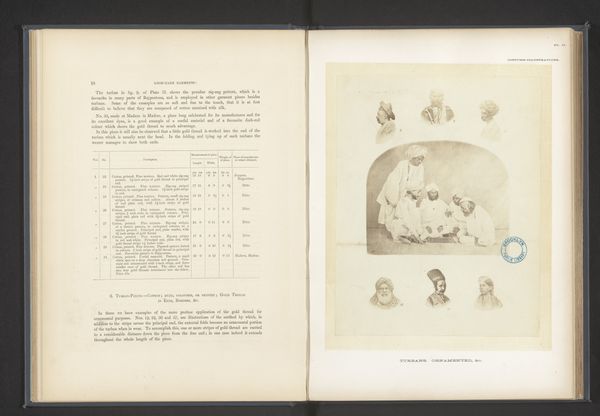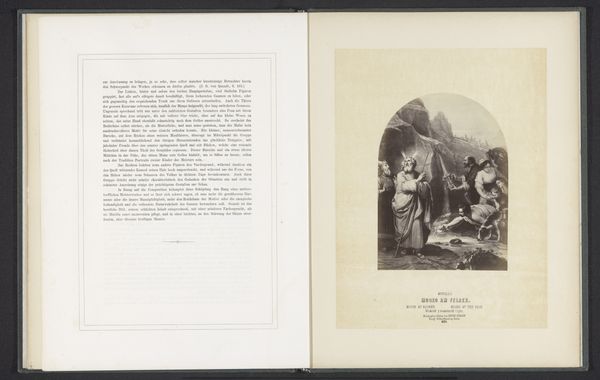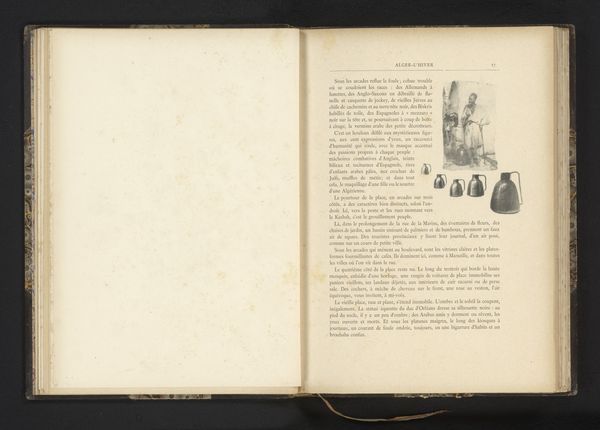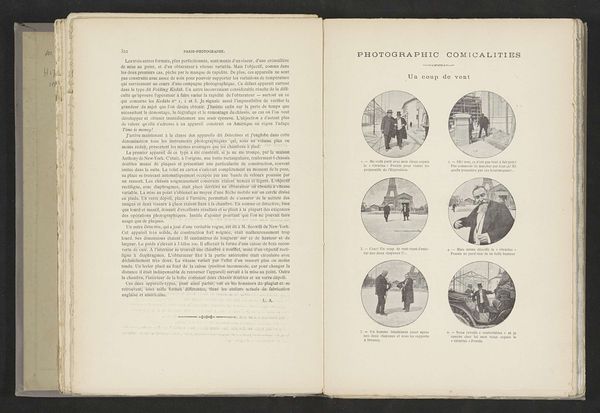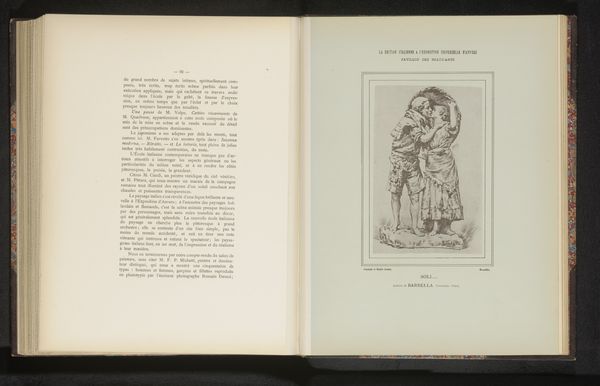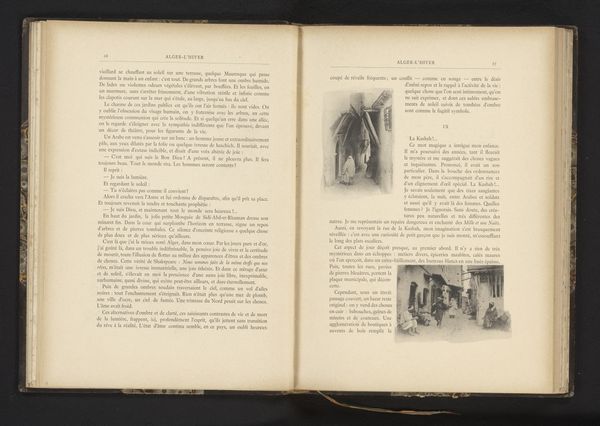
Verzameling portretten van Indiase vrouwen ter illustratie van verschillende vrouwenkleding before 1866
0:00
0:00
drawing, print, paper, pen
#
portrait
#
drawing
# print
#
paper
#
orientalism
#
pen
#
islamic-art
#
genre-painting
Dimensions: height 260 mm, width 205 mm
Copyright: Rijks Museum: Open Domain
Curator: I'm struck by the arrangement; these figures, so subtly rendered, almost seem to float on the page. There’s a stark quality to the overall composition. Editor: Today we're observing a fascinating print dating to before 1866. The rather lengthy title is "Verzameling portretten van Indiase vrouwen ter illustratie van verschillende vrouwenkleding"—"Collection of portraits of Indian women to illustrate different women's clothing." Curator: It’s immediately evident how central attire is to cultural identity and social roles, particularly within the representations of these women. Their clothing operates as a symbolic language of status, origin, and even self-expression. Editor: The delicate linework certainly elevates it beyond mere documentary record. Each fold, drape, and ornamentation, depicted through delicate hatching, enhances the visual texture and material depth. The artist truly paid meticulous attention to representing each piece of fabric. Curator: Absolutely. You can even discern a potential underlying psychological element at play within the expressions and the implied narrative that the clothing generates. The arrangement itself seems to indicate the significance of presenting a group identity as an aggregate of carefully curated individual parts. Editor: Although attributed to Anonymous, there is a recognizable orientalist lens through which we might read these drawings, tinged with exoticism, classifying these women as visual objects. These categorizations are inherently complicated by how non-Westerners may also have understood their portrayals at the time. Curator: True, and it’s easy to fall into that. But looking closely, the consistent emphasis on textiles also speaks to enduring cross-cultural interactions through trade and taste, linking material objects and how visual cultures become entwined and interwoven over time. It allows us to consider, from a modern view, where shared aesthetics are to be located historically, in colonial encounters. Editor: Indeed, even this restrained study allows for complex consideration beyond simply clothing and style, towards revealing broader social stratifications as understood within colonial dynamics. A reminder to view any portrait carefully, looking closely at form, while being careful to remain critically engaged with the wider politics of cultural representation. Curator: Ultimately, this careful gathering and organization of distinct identities through their representations within a Western medium remains compelling. Editor: I find this array of garments, lines, shapes, and tonalities truly illuminating. A wealth of information presented with understated sophistication.
Comments
No comments
Be the first to comment and join the conversation on the ultimate creative platform.
